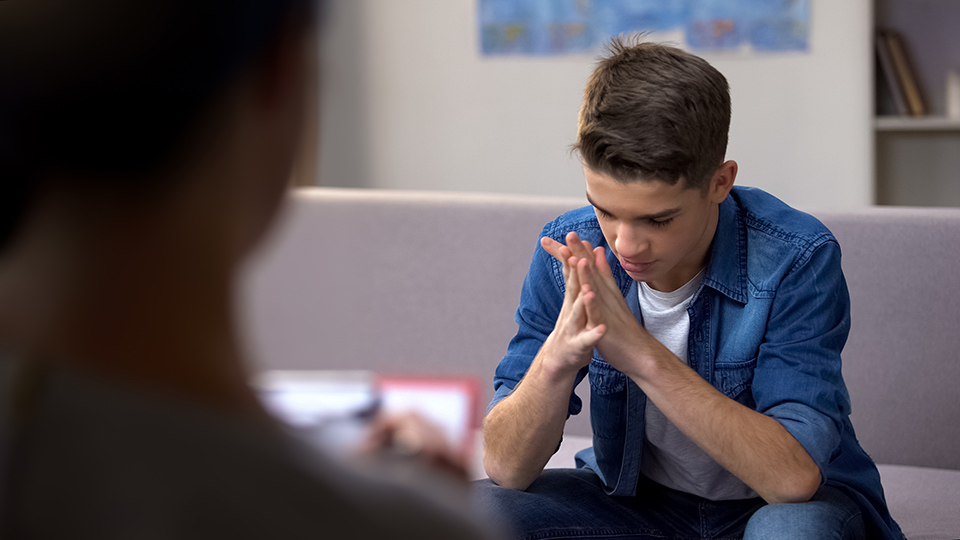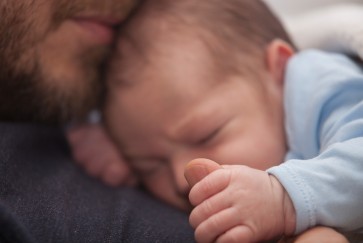Warning: This story discusses mental health suicide.
The coronavirus pandemic has caused feelings of anxiety and unhappiness for youth across the country, but it hasn’t caused new mental illness, according to Northwestern University experts.
The Centers for Disease Control and Prevention’s (CDC) recent survey findings showed a stark decline in teen mental health, including increased feelings of hopelessness and thoughts of suicide, with a particular impact on girls and LGB students.
COVID-19 caused a crisis among children already at risk for or experiencing mental illness — like anxiety, depression and psychosis — by taking away critical support systems that could allow these kids to mask their symptoms, Dr. John Walkup said.
Walkup, chief of child and adolescent psychiatry at Northwestern University Feinberg School of Medicine and head of the Pritzker Department of Psychiatry and Behavioral Health at the Ann & Robert H. Lurie Children's Hospital of Chicago, discussed in a Q&A how to determine risk and how to support your kids — whether or not they’re experiencing a mental health problem.
Which kids are most at risk?
“We’ve never had an adequate mental health system in the United States for kids, so that’s why half of the 20% of kids who have mental health risk never get any treatment. We don’t have a commitment to evidence-based practice either, so even the kids who get treatment don’t always get the highest standard. These are the kids at risk.
“I think most of the suicidality is in that undertreated or never-treated group. When we see kids coming into Lurie with suicidal behavior, it’s not new onset, it’s in the context of a robust history. When we can, we can do the kind of assessment that takes them back in time to see where they really didn’t get the kind of care they needed early on.”
Who should pay special attention to the CDC’s message?
“If you’ve got mental health problems in your family, you should have a high index of suspicion that maybe what your kid is going through isn’t just COVID, but maybe something bigger.
“If your mom had anxiety and dad had depression, you should feel comfortable thinking that your kid’s at risk for those disorders. If you haven’t done anything to scope it out and suddenly your kid’s looking like they’re not doing very well during the pandemic — and you know that most kids are doing okay during COVID-19 — then maybe you should start thinking that family history is coming to bear.
“With a family history of anxiety, if your 7-year-old can’t sleep, has belly aches and doesn’t want to order food in a restaurant or have sleepovers, those are the kids that should come to care.”
Is my kid momentarily unhappy or really struggling?
“COVID’s had a big impact, but it hasn’t caused people to become mentally ill. It has unmasked those with mental health issues who were held together through the support systems that were dismantled during COVID-19.
“Some kids are going through a lot of distress (a family member died, or their school is closed) and if you give them a rating score, they may say they’re pretty unhappy — but those kids are not mentally ill, and it’s important to understand the difference.
“The way to tell is the pervasiveness, the unexpected nature of it and the disproportionate nature of it.
“Think about anxiety. Anxiety is a healthy human emotion — if your world crumbles down, you ought to feel anxious about it, but it should be proportional and expectable to the size of the disappointment or challenge. But what you see in kids with anxiety disorders is they have disproportionate reactions to even normal challenges that most kids handle with ease or sometimes even enjoy the challenge of.”
How can I support my child?
“Structure and routine are the antidote to fear and worry and the more you can keep kids busy, the more they have a bedtime and a wake time and mealtimes and get to exercise and kind of have that balance — that’s what makes a world of difference.
“We’ve gotten so used to depending on schools as the providers of that kind of structure that when it’s gone, families don’t know how to create a structure for kids.
“We also talk about ‘grit’ and ‘pluck’ more in our culture because we’ve started to see people as victims to these experiences (like COVID-19, mental illness and trauma) and don’t really ask people to manage them in a more powerful way and build some personal strength around taking on these kinds of challenges.
“The kids who weren’t in good shape in our inpatient units in our emergency department were the ones who didn’t have the basic supports but also internally didn’t have the framework they needed to cope and deal.”
Can these conditions be identified early?
“I tell our pediatricians to get a family history at the first well baby visit when they’re a month old so they can set up a personalized screening strategy for that kid. That way you can begin to listen and work on parenting skills, and that kid’s going to have much better outcomes because their parents were prepared.
“We know to put those plastic things in sockets and to make them wear helmets, but you don’t tell people that 20% of kids have a mental health problem before graduating high school and it’s really conveyed by family risk. We don’t have that conversation in modern medicine.”


